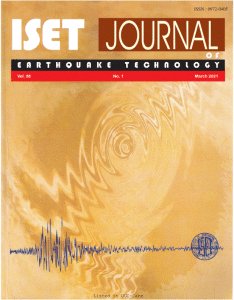Home > Issues & Journals
TECOMÁN EARTHQUAKE: PHYSICAL IMPLICATIONS OF SEISMIC SOURCE MODELING, APPLYING THE EMPIRICAL GREEN’S FUNCTION METHOD, AND EVIDENCE OF NON-LINEAR BEHAVIOR OF GROUND
Alejandro Ramírez- Gaytán, Jorge Aguirre and Carlos I Huerta López
Paper No.: 507
|
Vol.: 47
|
No.: 1
|
March, 2010
|
pp. 1-22

Abstract
In this study, we generate a source model for Tecomán Mexico earthquake (21 January 2003, 20:06). The presence of soft soils and the location of 8 of the 10 major cities of Colima state in area where it earthquake spread are important factors to model the seismic source. We model in the frequency interval of 1-10 Hz, because many buildings, bridges and civil construction have their dominant vibration periods in this range. For generate the model we applying the empirical Green’s function method (EGFM) using the Tecomán earthquake (Mw = 7.5) as target event and November 19, 2006 (Mw = 5.5) earthquake as element event. At the recording site of MANZ, we did a spectral analysis to compare weak and strong ground motions in order to identify if some energy is biased concentrated at certain frequencies in the frequency interval of 1-10 Hz. The synthetics waveforms and Fourier spectrums show a good fitting with the observed ones in five stations. The latter roughly corresponds to the dislocation model found by Yagi et al. (2004).
Keywords: EMPIRICAL GREEN’S FUNCTION METHOD (EGFM), MANZANILLO RECORDING STATION (MANZ), TARGET EVENT, ELEMENT EVENT
©2025. ISET. All Rights Reserved.